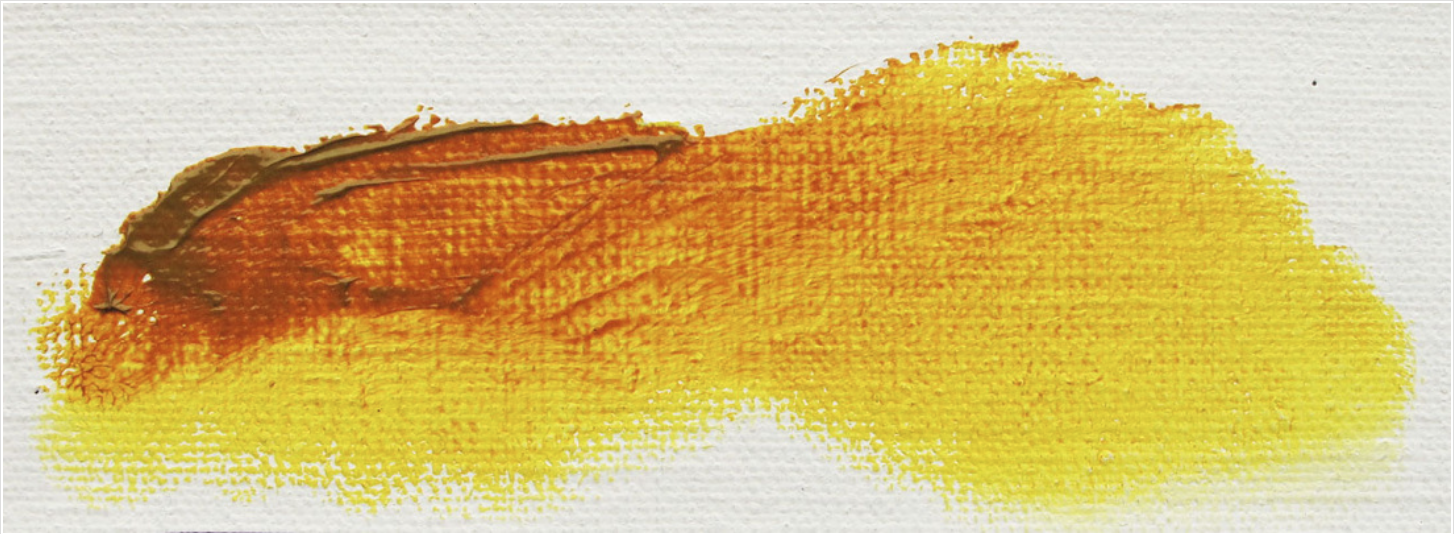What exactly is an Undertone?
Most designers and colour experts use the word “undertone” to describe a subtle, secondary colour that reveals itself through a main colour, or “masstone”. For instance, if you choose a grey paint colour at the store but it starts lookin’ a little BLUE once you slap it up on the walls, you could describe the colour as infuriating having a grey masstone with a blue undertone.
The Technical Definition
A deep, muted ochre masstone transitions to a bright yellow undertone. Photo by Studio Art Supplies.
The thing is, “undertone” is a bit of a misnomer in the design world because the technical definition of “undertone" concerns the the thickness of the coating and the colour of its substrate. In other words, “undertone” and “masstone” are borrowed terms from the fine arts, where they describe how paint colour changes with the thickness of its application.
This short video by Winsor & Newton explains the concept:
HOWEVER.
Even though these terms aren’t technically meant to describe interior finishes like wall paints and textiles, that ship has looong since sailed! “Masstone” and “undertone” are very much a part of designers’ and painters’ vocabulary. They’re super useful and widely-understood terms, which is why I also use them on the blog!
The Dictionary Definition
A quick Google search confirms that ‘undertone’ is commonly used in reference to evenly-applied colour, and the figurative definition works too, e.g. “an underlying quality or feeling [of a colour]”:
Some colour experts draw all their knowledge from experience, while others rely entirely on science. If you favour the middle ground like me, all the articles in my Colour Series combine science, standards, colour training, and personal observation to bring you the most balanced and helpful colour advice possible!






If you find this design advice valuable and you’re able to leave a token of appreciation, I am deeply grateful. Thank you for your support!